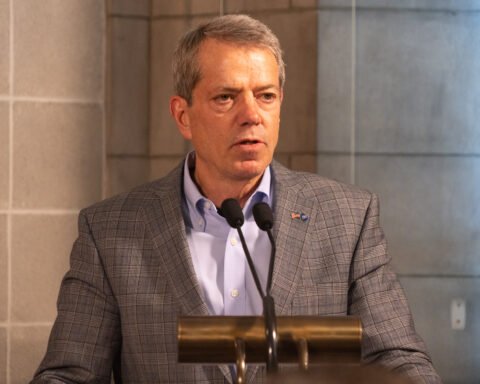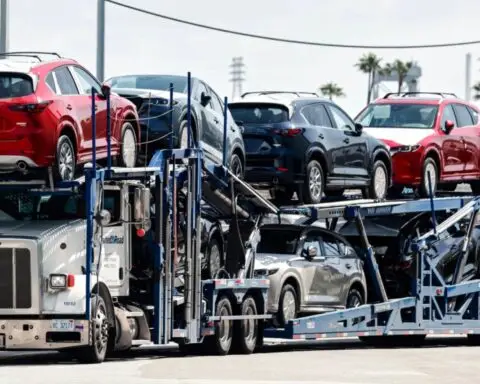Canary Media | by Julian Spector | August 15, 2024
Source: Form Energy set to build world’s biggest battery in… | Canary Media
theNational.buzz Summary:
- First Self-Developed Project: Form Energy’s Maine installation is its most ambitious project, marking the company’s shift from utility contracting to independent development.
- Iron-Air Batteries: The 100-hour iron-air batteries offer a safer, long-term power supply, addressing New England’s fossil gas shortages and reducing dependency on oil during extreme weather.
- Regional Impact: The project will help stabilize New England’s energy grid, particularly during winter, with a targeted completion by 2028, employing up to 100 workers.
New England states are attempting to make good on their climate pledges while addressing some very real concerns about the long-term stability of the region’s electrical grid. The Department of Energy awarded $389 million in grant funding last week to strengthen that system. Much of that money will support terminals to collect power from massive new offshore wind farms and distribute it across the region. But $147 million from the tranche, which was earmarked in the Bipartisan Infrastructure Law, will go toward an enormous, unconventional battery project intended to help one of the most congested parts of the New England grid.
The startup Form Energy plans to install its novel iron-air batteries at the site of a former paper and pulp mill in Lincoln, Maine, which sits off I-95 between Bangor and Mount Katahdin. The project would be able to inject 85 megawatts of power onto the grid, and maintain that level of discharge for up to 100 hours. Instead of burning fossil fuels for on-demand power, these batteries store energy from the grid at times of abundance, like when the offshore wind farms are cranking.
“The New England grid is moving quickly to address its vulnerabilities from a reliability standpoint and its ability to bring on additional low-cost renewables,” Form co-founder and CEO Mateo Jaramillo told Canary Media. “Having multiday-duration storage gives them more levers to solve that complex challenge they have for their grid.”
Form has been working since 2017 to commercialize something that delivers the “clean, firm” power a low-carbon grid desperately needs. That’s a task that neither wind nor solar can accomplish on its own; conventional lithium-ion battery plants can guarantee only four or five hours of peak output, based on current industry practices. Form’s engineers came up with a way to harness iron’s rusting process to store and discharge energy over long periods of time at prices well below those of lithium-ion.
If things go according to plan in Lincoln, the project will hold 8,500 megawatt-hours of energy — that’s more than any existing battery plant in the world today (some pumped-hydro storage plants do hold more electricity, but those are large construction projects, not mass-produced batteries).
Form is seeking that superlative without having carried out any utility-scale projects with its technology, yet. So far, it has won contracts with traditional utilities to build a few megawatts of power capacity with 100 hours of duration — even signing those contracts is a feat, given utilities’ typical reticence about trying new things.
Minnesota’s Great River Energy inked the first deal with Form, and is slated to get its pilot project early next year, Jaramillo said. Customers like Xcel Energy and Southern Company will receive Form installations after that.
Form recently completed construction on its factory in the old steel town of Weirton, West Virginia, and is working through production trials for its commercial product there. Absent any commercial projects in operation, Form builds trust for its newfangled battery by pointing to data from systems it has installed in the field for testing, Jaramillo explained. The grant application also entailed rigorous vetting from DOE experts and third-party engineering studies.
The Maine installation marks the first time that Form has chosen to develop its own project instead of contracting with a utility customer, and not coincidentally, it’s the most ambitious so far.
“This is a very natural next step in terms of scaling up and deployments,” Jaramillo said, adding that it’s actually not a huge outlier compared with other projects Form is working on but hasn’t yet publicized: “There will be other utility projects that get announced that are the same size or larger.”
New England’s grid could use the help. The region has limited supplies of fossil gas, thanks in part to environmental attitudes in neighboring New York, which has blocked new pipelines. This hasn’t reduced New England’s appetite for electricity and heating fuel, but did force the region to supply itself with liquefied natural gas imports. Unfortunately, the century-old protectionist law called the Jones Act makes it prohibitively expensive to ship in cheap American gas, so New England has the pleasure of competing on the tight global market. (Form published a study last year on how its tech would help in these market conditions.)
That gas stress becomes especially risky in the winter, because home heating gets first dibs on the fuel. When a cold spell strikes, and gas runs low, power plants switch to burning oil, which sets back the region’s ambitious commitments to reduce its climate-altering emissions. The region’s independent system operator, which runs the grid, has modeled likely scenarios in which the grid could run out of power for extended periods of time, and there are a lot of ways that could happen.
The Lincoln project could help by guaranteeing a long-term power supply in a corner of the region that is stretched thin for power supply relative to demand. The battery can pitch in during daily peaks as well as go into extreme weather events loaded up for 100 hours of continuous discharge. Normally, a modern American grid would use gas as the backstop for such events, but given the regional limitations, it pays to have on-demand power that doesn’t rely on that fuel.
Now that the federal money has been committed, Form needs to finalize a lease with the town, engage locally for permits, and file for interconnection to the grid. Once the paperwork is done, Form expects to employ 100 workers for construction and then five to 10 for long-term operations. The company is targeting a 2028 completion, “if not sooner,” Jaramillo said.
In those permitting discussions, Form has a big advantage: Its batteries’ core ingredients are iron and water, so they can’t catch on fire or blow up in the way lithium-ion batteries occasionally do. The fire risk has complicated some battery developments near population centers in the Northeast, but that shouldn’t apply in this instance.










